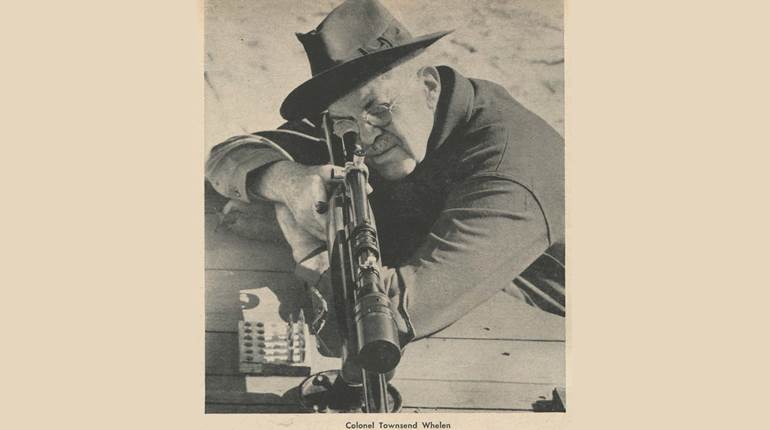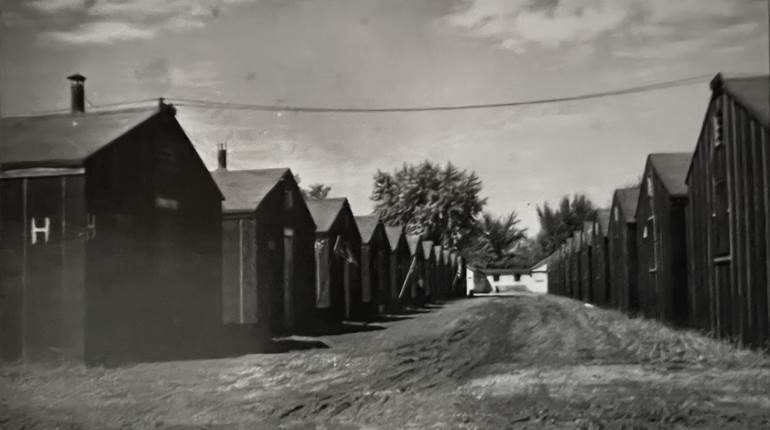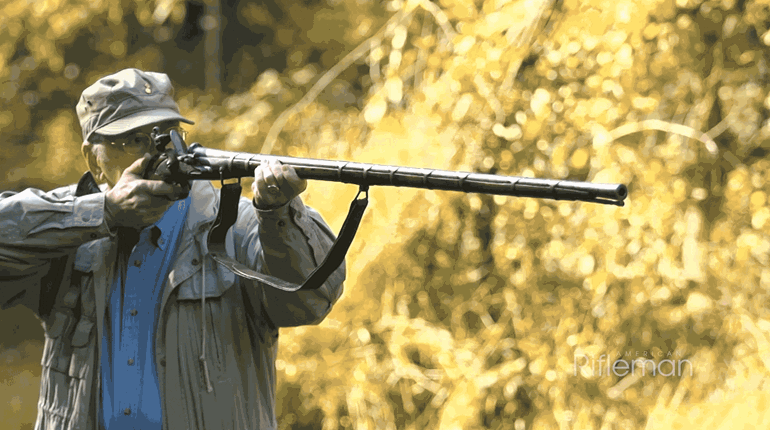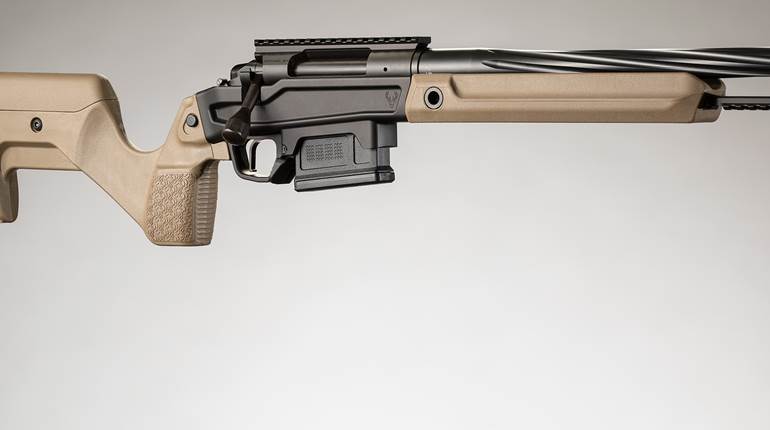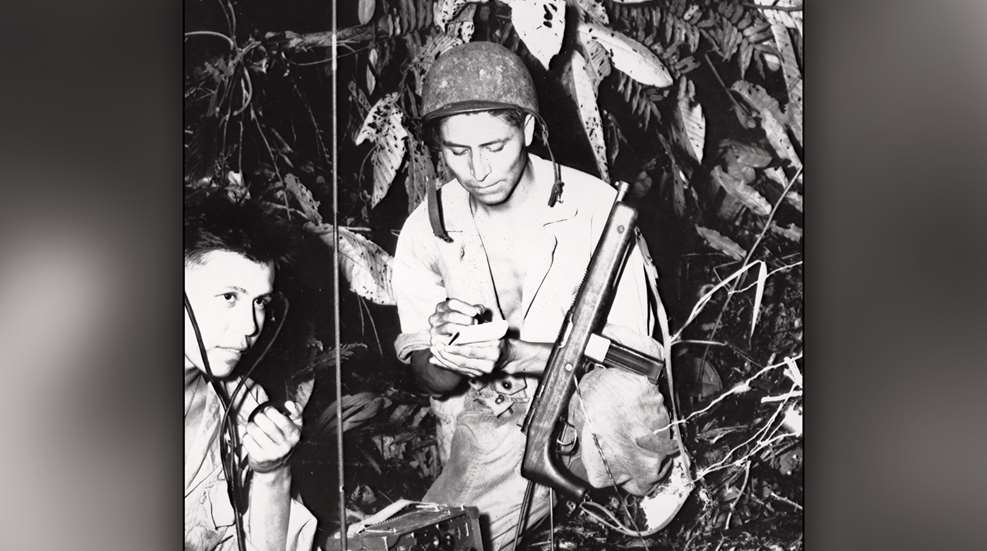
This article appeared originally in the April 2007 issue of American Rifleman. To subscribe to the magazine, visit the NRA membership page and select American Rifleman as your member magazine.
Infantrymen often have conflicting feelings about the arms they are issued. A good example is the famed M1 Garand rifle. Many recruits complained about the rifle’s weight, its eight-round en bloc clip, its propensity to inflict the painful “M1 thumb” on untrained users, along with other real or perceived deficiencies. Nonetheless, once in combat, many of these same detractors soon came to appreciate the Garand’s firepower, reliability, accuracy and ease of maintenance, and the M1 gained a reputation as one of the best service rifles of all time.
On the other hand, there have been a few arms in Uncle Sam’s arsenal that garnered generally negative reputations. Some, like the M16 rifle, were eventually improved sufficiently to rehabilitate the initial negative perceptions. Others, like the French M1915 Chauchat automatic rifle that was widely issued to American “Doughboys” in World War I, never overcame their reputations as unreliable and ineffective. Another design that is often categorized with the Chauchat is the Reising submachine gun of World War II.
The Reising submachine gun was designed by Eugene G. Reising, who was a graduate of Lehigh University and an experienced gun designer. He had previously been on John Browning’s team during the development of the U.S. M1911 .45 ACP pistol and later worked for a number of other commercial firms, including Savage, Stevens, Mossberg and Marlin.
 The semi-automatic Reising Model 60 .45 ACP, shown (top) with a 12-round-capacity magazine, was intended for civilian plant guards and other security personnel. The Reising .45 ACP Model 50 Submachine Gun, shown below with a 20-round-capacity magazine, was adopted by the Marine Corps in early 1942. Photo courtesy of Smith Photographic Services, Shreveport, La.
The semi-automatic Reising Model 60 .45 ACP, shown (top) with a 12-round-capacity magazine, was intended for civilian plant guards and other security personnel. The Reising .45 ACP Model 50 Submachine Gun, shown below with a 20-round-capacity magazine, was adopted by the Marine Corps in early 1942. Photo courtesy of Smith Photographic Services, Shreveport, La.
Just prior to the outbreak of World War II in Europe, Reising realized that a new submachine gun might be a lucrative venture. He went to work, and a patent was applied for on June 28, 1940. Reising negotiated with Harrington & Richardson of Worcester, Mass., to manufacture his design, and production commenced in late 1940.
Reising’s submachine gun had several unusual features, including delayed-blowback, closed-bolt operation. Most submachine guns utilized conventional blowback operation and fired from an open bolt, which allowed for simpler operation and better cooling during automatic fire. The major disadvantage of an open bolt was that the heavy bolt slammed forward almost simultaneous to the moment of firing, thus disturbing the aim. Unlike virtually all other submachine guns until then, the Reising fired from a closed bolt, which resulted in it being an inherently more accurate arm.
Another disadvantage of the typical blowback submachine gun—not shared by the Reising—was that the bolt remained open while the gun was cocked, thus permitting dirt and other debris to enter the action port. The Reising was cocked by means of a lever located in a recess on the underside of the fore-end. This location had the advantage of protecting the lever from damage and inadvertent manipulation. However, this was mitigated to some extent as the recess could become clogged with mud or dirt, thus making it difficult to cock the gun.
The gun fired at the rate of approximately 450 to 500 rounds per minute, which was as fast as a number of other contemporary submachine guns and even a bit faster than the later M3 “Grease Gun.” The Army’s testing of the Reising at the Aberdeen Proving Grounds in July 1941 met with mixed results. An endurance test, in which 3,470 rounds were fired, resulted in only two malfunctions, one traceable to a defective cartridge. However, other tests revealed some functioning problems when it was not cleaned regularly and subjected to operation in dirty conditions. The Army declined to adopt the Reising and remained firmly committed to the Thompson while embarking on a program to develop a better replacement—the M3.
Like the Army, the U.S. Marine Corps’ official submachine gun at the time was the M1928A1 Thompson. However, there were not nearly enough Thompsons on hand, and production was insufficient to meet the increased wartime demand. As was often the case, the Marine Corps was at the “short end of the stick” regarding procurement, and the bulk of the Thompsons coming off of the assembly lines were earmarked for the U.S. Army and for Lend-Lease commitments. Since the Marine Corps needed another source of submachine guns—and since H&R had just gotten underway with Reising production—it was logical that the Marines would give serious consideration to the new design.
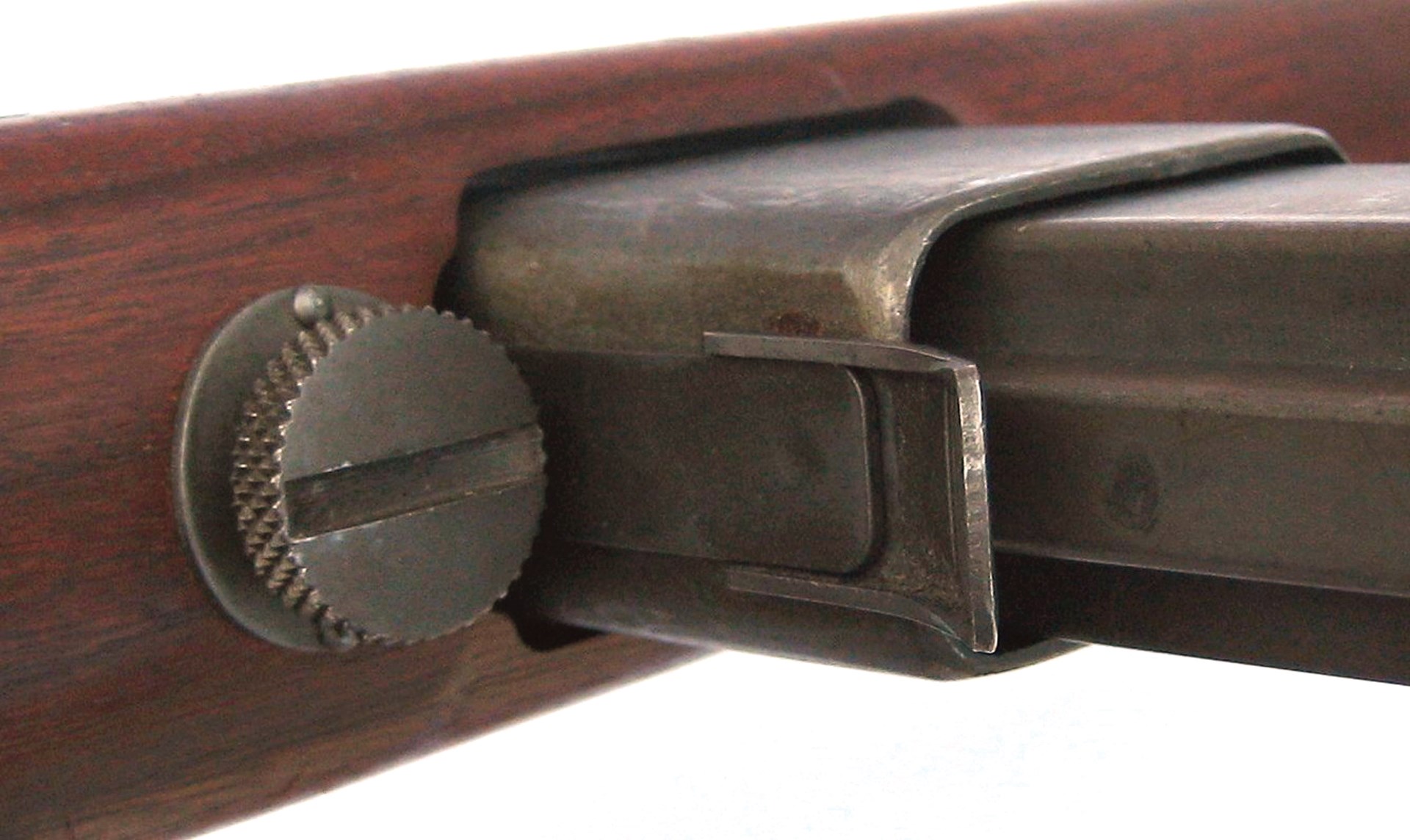 The Reising’s stock could be quickly separated from the barreled-action by turning out a thumbscrew located behind the magazine well. Photo courtesy of Smith Photographic Services, Shreveport, La.
The Reising’s stock could be quickly separated from the barreled-action by turning out a thumbscrew located behind the magazine well. Photo courtesy of Smith Photographic Services, Shreveport, La.
The results of the August 1941 Marine Corps testing of the Reising prior to adoption have not been discovered. It is probable that the gun’s most valuable asset to the Marines was that it was available. As the Army’s tests had shown, under ideal conditions, the Reising performed as well or better than almost any other submachine gun around. Its closed bolt-operation made it accurate, particularly in semi-automatic fire. At about 6¾ lbs. (unloaded), it was much lighter than the Thompson, and the barreled action could be quickly removed from the stock by means of a knurled thumbscrew.
Model 50
The Marine Corps adopted the Reising in early 1942, and it was designated the “Model 50.” It was intended primarily as a supplementary arm until Thompsons became available in sufficient numbers. The Model 50 was chambered for the standard .45 ACP cartridge and was 35¾" long. It had a one-piece wooden stock fitted with sling swivels. The stamped, sheet-metal rear sight was adjustable for elevation from 50 to 300 yds. A lever on the right side of the receiver allowed for selection of semi-automatic fire, fully automatic fire or safe. The M50 had a compensator on the end of its 11" barrel, which functioned in much the same manner as the Thompson’s Cutts compensator but was somewhat different in general configuration. The barrel also had cooling fins near the receiver.
Model 55
Soon after adoption of the Model 50, the Marines requested a modified version of the Reising for use by parachute units that were being formed. Harrington & Richardson submitted a variant with a short wooden stock fitted with a pistol grip and a folding wire butt. It was adopted by the Marine Corps and designated the “Model 55.” Initially, the M55 was equipped with a compensator, but in order to make it even more compact, this component was eliminated fairly early in production. Otherwise, it was the same as the Model 50. The Model 55 was 31 1⁄4" in length with the stock extended and only 22 1⁄4" with the stock folded. The gun’s unloaded weight was a mere 6¼ lbs.
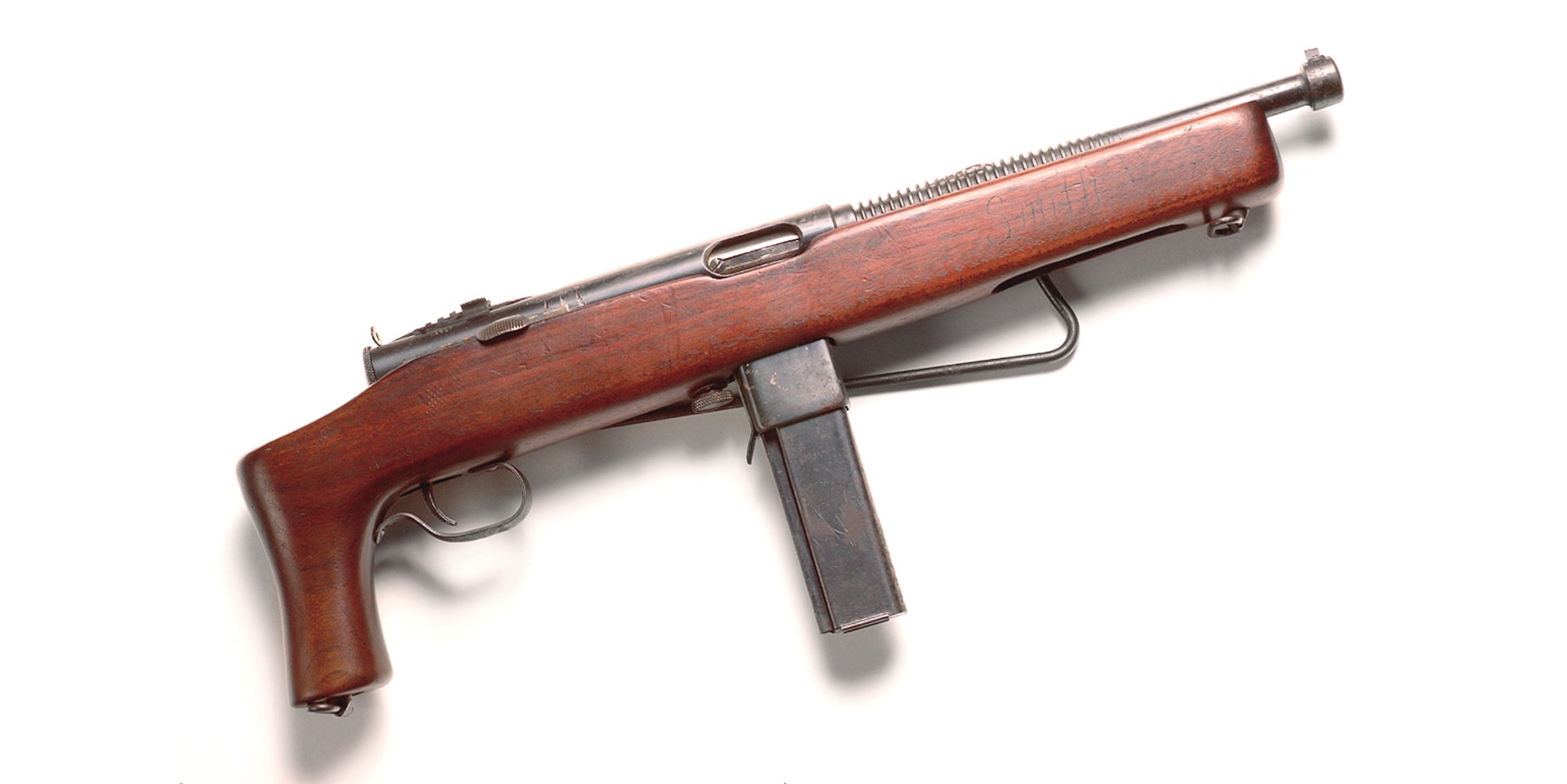 The Model 55, made for Marine parachutists, had a wire folding stock and lacked a compensator. Photo courtesy of Smith Photographic Services, Shreveport, La.
The Model 55, made for Marine parachutists, had a wire folding stock and lacked a compensator. Photo courtesy of Smith Photographic Services, Shreveport, La.
The U.S. Army briefly considered standardizing the Reising Model 55 for tank crews due to its compact size. But reliability problems and the development of the almost equally compact M3 submachine gun resulted in the Army dropping further consideration of the M55 Reising. It is interesting to note that, with the exception of the M1A1 .30-cal. carbine, the M55 was the only U.S. military small arm of World War II specifically designed for airborne use.
Model 60
Harrington & Richardson also manufactured a semi-automatic-only version of the Reising, the “Model 60.” In addition to not being capable of fully automatic fire, the M60 had an 18¼" barrel to further remove it from the Federal restrictions imposed on fully automatic and/or short-barrel rifles under the National Firearms Act. The semi-automatic Model 60 used the same type of magazines as the M50 and M55. The Model 60 was primarily intended for use by civilian plant guards and security personnel. There is some sketchy anecdotal evidence that a few M60 Reisings may have been used by some Marine Raiders during the war. If so, such combat use of the M60 would have been limited. Available records indicate that a little more than 3,200 Model 60 Reisings were manufactured by H&R between 1942 and 1949.
Reliability Issues
While appearing on the surface to be a simple design, the Reising was actually relatively complex. Some writers have stated that the subsequent problems encountered with the Reising were due to the fact that the gun was cheaply made. Even though much of the gun was made by H&R on 50-year-old machinery, this was not the case.
The Reising was actually comparatively well made, especially when compared to many other submachine guns—the Thompson notwithstanding. Its receiver was machined from a solid steel bar, and the barrel was made of quality nickel-chrome steel. While the design may have been flawed from a military standpoint, as far as its manufacture goes, the Reising was not the “hunk of junk” as has often been alleged. When kept scrupulously clean and well maintained, the Reising performed admirably.
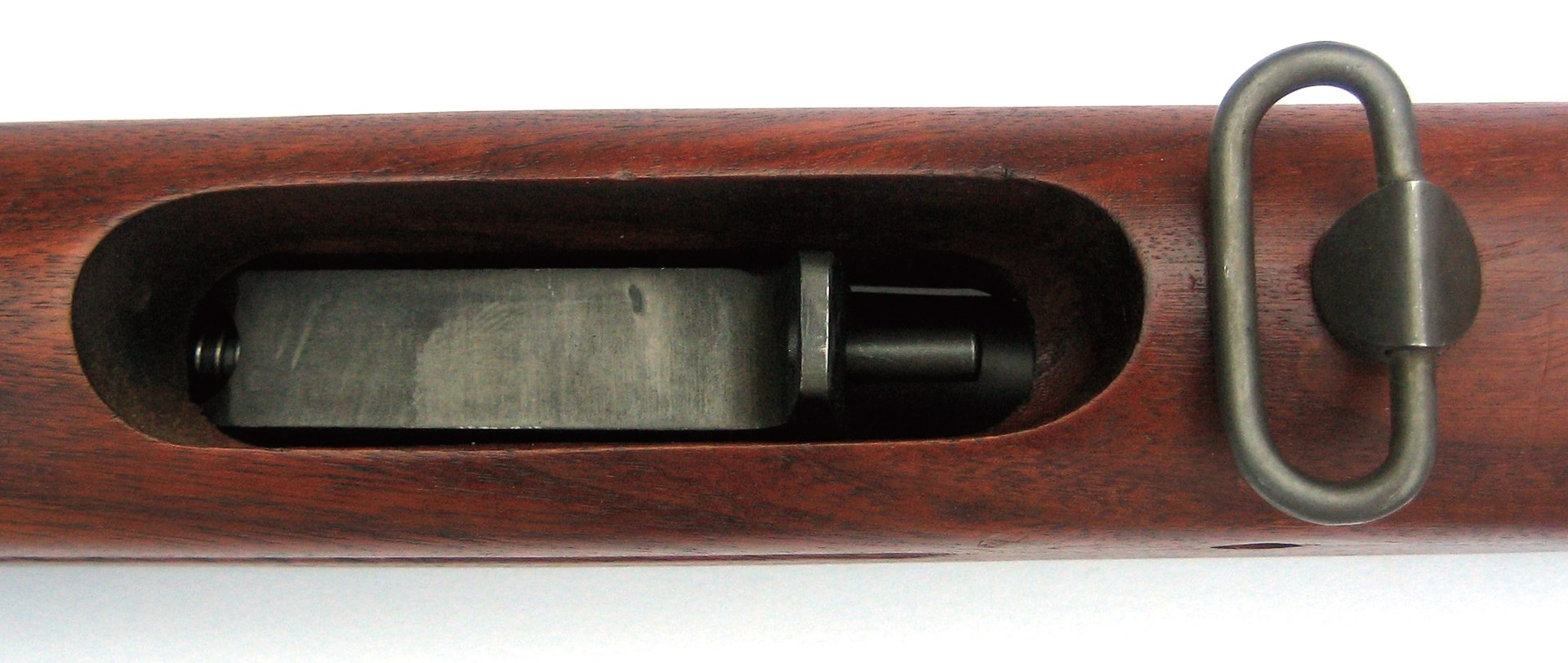 The cocking lever was in a recess under the fore-end. It was protected but could become clogged with dirt or mud. Photo courtesy of Smith Photographic Services, Shreveport, La.
The cocking lever was in a recess under the fore-end. It was protected but could become clogged with dirt or mud. Photo courtesy of Smith Photographic Services, Shreveport, La.
The Reising was inherently one of the most accurate and pleasant to fire submachine guns ever produced. However, if the gun got even marginally dirty, it tended to malfunction. One of the reasons for this is because the bolt locked by camming into a recess milled into the receiver. If even a small amount of dirt found its way into this recess, the bolt could not seat properly, and the gun would malfunction.
The Reising’s magazine also exacerbated reliability problems. It utilized a staggered-column design with single-cartridge feeding. This combined the worst of both worlds in magazine design. The slightest amount of damage to the magazine’s feed lips could render the gun inoperable. The standard Reising magazine had a 20-round capacity, and a 12-round magazine was also produced. The purpose of this smaller-capacity magazine has been the subject of some speculation. It obviously was not as desirable as the larger-capacity, 20-round type for combat use. Some writers have stated that it was intended for training or guard use. However, a number of World War II Marine Corps photos clearly show the 12-round Reising magazine being used in combat. The real reasoning behind the 12-round magazine remains uncertain, but the magazines were made in relatively large numbers and were rather widely issued. They certainly weren’t any handier or more compact than the 20-round type—as they were the same length—but had the capacity reduced by means of deep creases on either side of the body. Since the 12-round magazine held the cartridges in a straight line rather than staggered as in the 20-round variety, it is reasonable to suggest that the smaller capacity magazine was developed to help alleviate the reliability problems inherent in the larger-capacity magazine. Both types of magazine were manufactured by H&R and so marked on the front of the body. Since the feed lips on the Reising magazine were the most critical area, it was not uncommon for Marines to carefully sort through a number of magazines to find specimens with undamaged lips. There were also some problems encountered regarding the non-interchangeability of replacement parts on the guns.
Combat Use
The Reising’s baptism of fire occurred in the Solomon Islands when many of the guns came ashore on Guadalcanal and the ancillary islands during the invasion in August 1942. It is well documented that some problems were encountered with them. There are a number of oft-repeated stories regarding the dumping of Reisings in the rivers or seacoast of Guadalcanal to prevent them from being issued to the Marines due to the frequent malfunctions.
One typical reaction was related in Henry Berry’s book Semper Fi Mac: “While we were at it, I figured it was a good time for me to toss my ridiculous Reising submachine gun. What a lemon—a real .45 caliber hunk of junk. I think before long every officer who had one had dumped it. I wonder who hung that beauty on Uncle Sam. Later on, I got hold of a Thompson, a real submachine gun.”
Along the same lines, Marine Maj. Frank Hough wrote the following in his book The Island War: “Only one weapon had proved to be a definite failure; the Reising submachine gun. The Marine Corps had adopted this in the beginning largely as a measure of desperation because of their inability to obtain the Thompson, or ‘Tommy Gun,’ in sufficient quantities. It (the Reising) could be made cheaply, and it worked well enough on the proving grounds. But it simply would not stand up under combat conditions. On Guadalcanal, where men’s lives depended on their weapons, Marines began throwing their Reisings into the Lunga River and falling back on their rifles.”
If possible, the Model 55 had an even worse reputation than the Model 50. Its flimsy metal stock was not very durable, and the lack of a compensator didn’t help either.
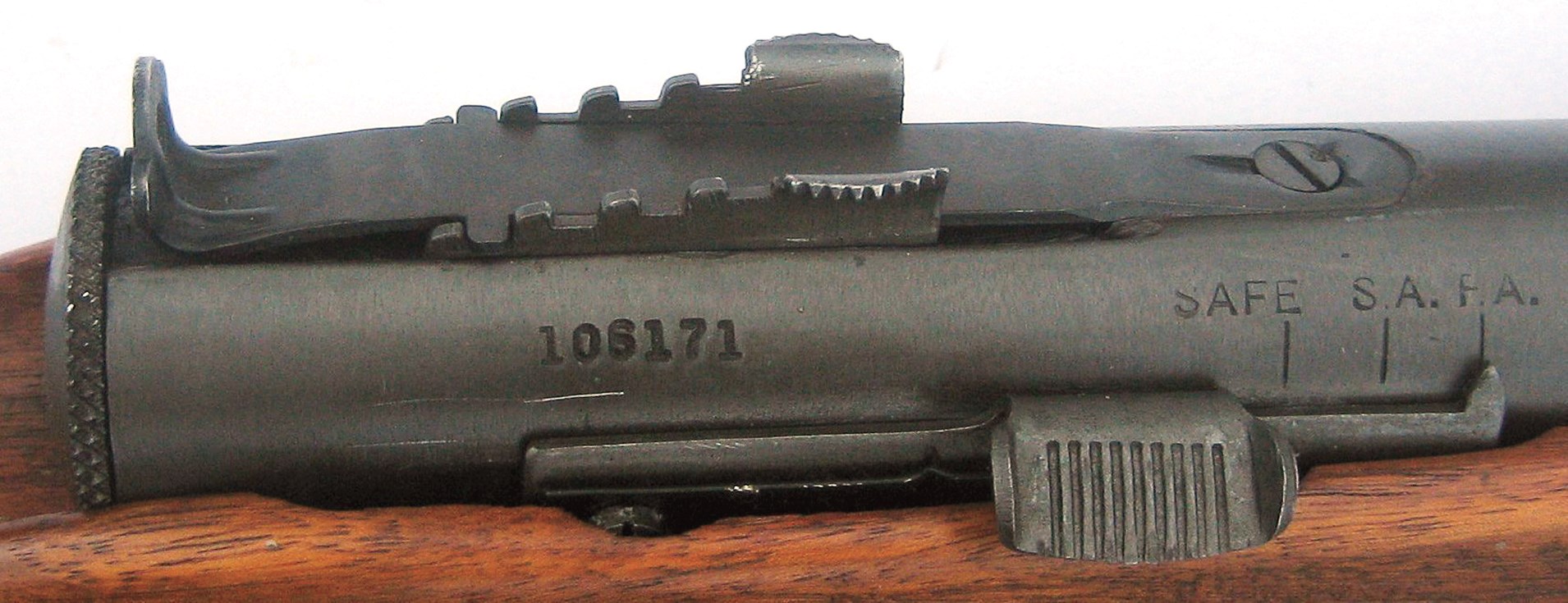 The Reising could fire from a closed bolt in full- or semi-automatic. The selector was on the receiver’s right. Photo courtesy of Smith Photographic Services, Shreveport, La.
The Reising could fire from a closed bolt in full- or semi-automatic. The selector was on the receiver’s right. Photo courtesy of Smith Photographic Services, Shreveport, La.
Conversely, there are some contemporary accounts of combat use of the Reising that portrayed the weapon in a favorable light. Lt. Col. John George, in his book Shots Fired in Anger, wrote that: “[Reisings] did possess a tremendous advantage in their very light weight and this would have caused me to carry one as a personal weapon had I been forced to choose between a Reising and a Thompson, although I had more confidence in the latter.”
An example of the Reising’s firepower was related in the book A Special Valor, when a Marine Raider lieutenant recalled: “The Japs … broke from the jungle almost on top of us, charging in solid waves. I screamed the alarm as I began firing my Reising submachine gun … the rest of the men were falling back as I emptied two magazines … .”
Another favorable opinion of the Reising was related by Marine Lt. Col. Victor Krulak in a statement given Dec. 23, 1943, before an Ordnance board: “[The Reising was] built as a replacement for the Thompson gun. Later models which have been accurately fabricated are satisfactory. They function well and as the .45 goes it is quite acceptable … .”
Although the Reising’s generally negative reputation cannot be denied, a number of combat-wise Marines felt otherwise. The Reising clearly had some problems regarding reliability, but it likely was not as bad a combat arm as is generally thought today.
Production
The exact number of Reising submachine guns produced during World War II is not known, although several sources give a figure of approximately 100,000. This estimate is likely to be fairly accurate but undoubtedly includes guns made for the commercial market as well as guns supplied to Allied nations—especially the Soviet Union—under Lend-Lease-type programs. A Marine Corps document dated Jan. 26, 1943 stated: “Approximately 52,000 Reising submachine guns have been received to date of a contract for 65,000. M1 submachine guns (new Thompsons) are expected at a rate of about 600 per month.”
It is doubtful if any more than the original contract number of 65,000 guns were procured by the Marine Corps. It is entirely possible that the contract may have been cancelled prior to its completion if enough Thompsons or carbines became available, but subsequent Marine Corps documents indicate that at least 63,500 Reisings were delivered during World War II. This figure likely includes both the M50 and M55 variants. Except for the “Lend-Lease” guns, the remainder of the approximately 100,000 Reisings was utilized mainly for such commercial duties as prison and plant security and police work.
Even though more of the military-contract Reisings were made, a smaller percentage has survived due to use in combat (including being dumped into the Lunga River!). The primary difference between the military Reisings and the commercial guns is that the former typically had parkerized finishes and sling swivels attached to the bottom of the stock, whereas the latter were blued, and sling swivels, if fitted, were often fastened to the side of the stock. Although the Marines specified a Parkerized finish, there is evidence that some early USMC-contract guns were blued. Likewise, there will be some variances noted in the configuration of the stock, as examples with and without grasping grooves may be encountered. Most, if not all, of the military-contract Reisings had a “P” proofmark stamped on the barrel near the receiver.
In 1942, the Marine Corps Tables of Organization and Equipment (TO&E) authorized 4,206 Reising submachine guns for each Division but, by the end of 1943, the gun was no longer listed in the official TO&Es. As Thompsons, M3s and carbines became available, the Reisings were withdrawn from front-line combat service. A World War II Marine Corps document revealed, “… sufficient additional Reising submachine guns, the Model 50 only (straight stock), be procured to meet the requirements of posts and stations in the United States and that no more Model 55’s (folding stock) be procured.”
Some M50, and possibly M55, Reisings were transferred to shipboard Marine contingents during World War II, and they remained a part of the small arms armament for a number of U.S. Navy warships through the end of the war. Shortly after 1945, the Marine Corps disposed of its inventory of Reisings and many were sold or given to various law enforcement entities.
While it may have been flawed, the Reising was the only submachine gun available to the U.S. Marines in any significant numbers at a most-critical time in our nation’s history. Despite its less than stellar reputation in the eyes of many, the Reising is a historic U.S. military arm due to its widespread use in the pivotal early Pacific battles of World War II.












